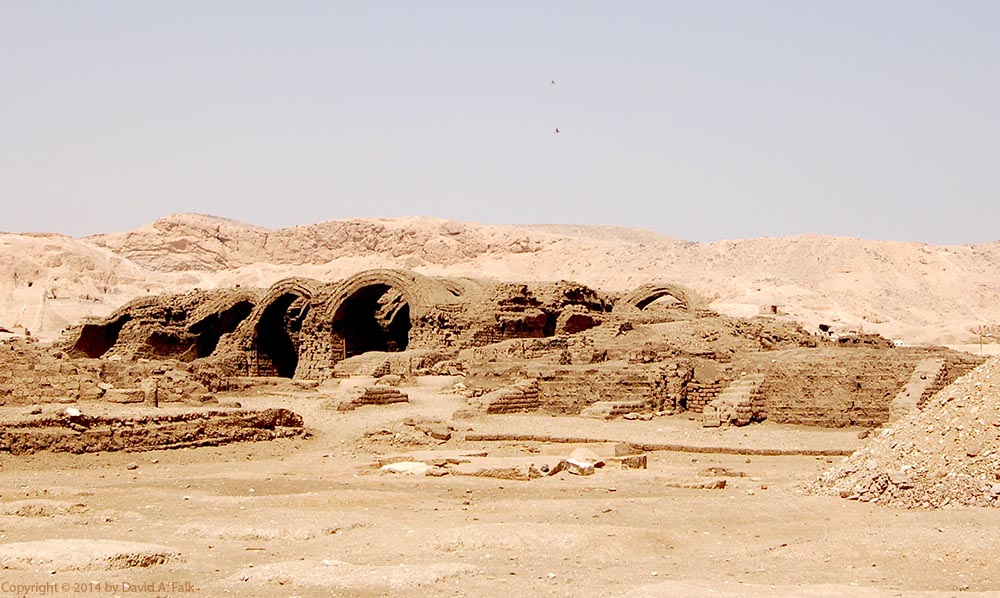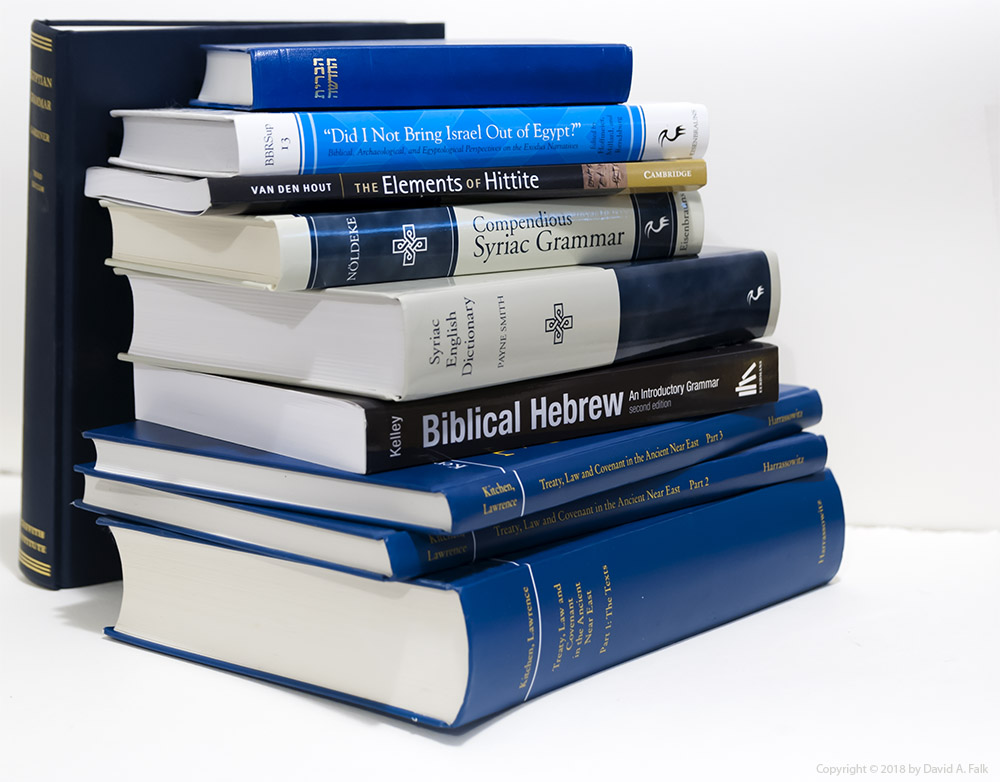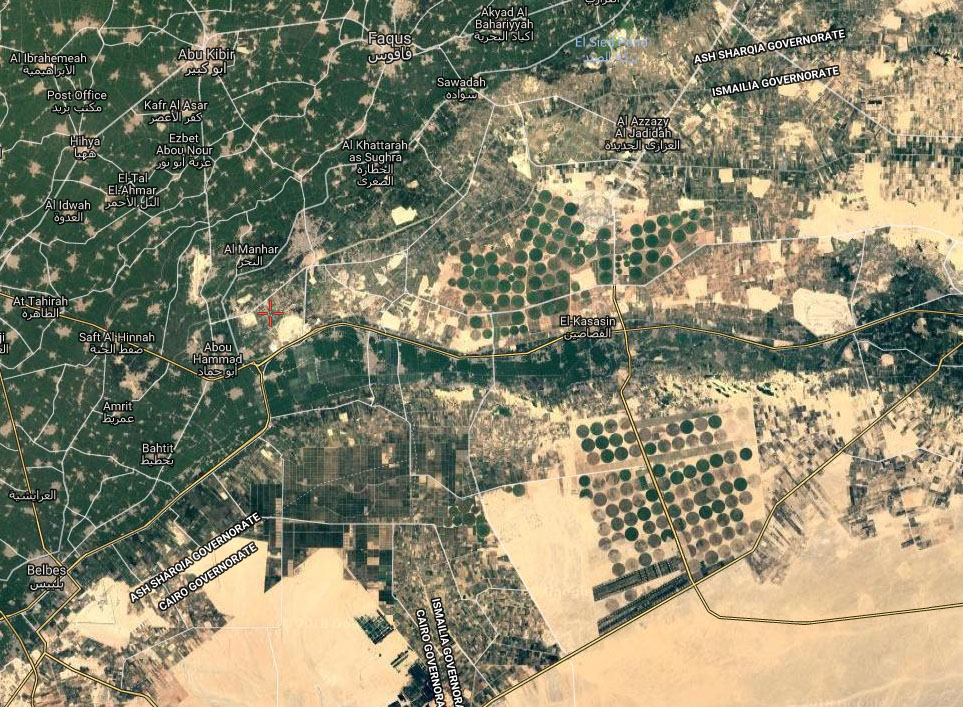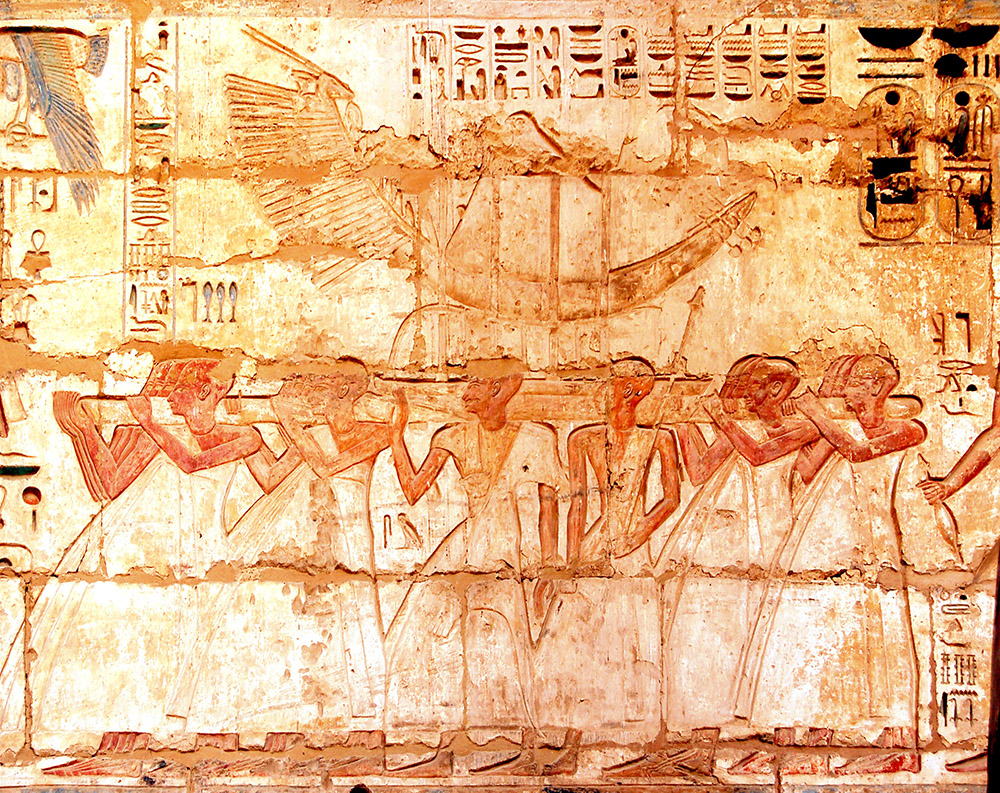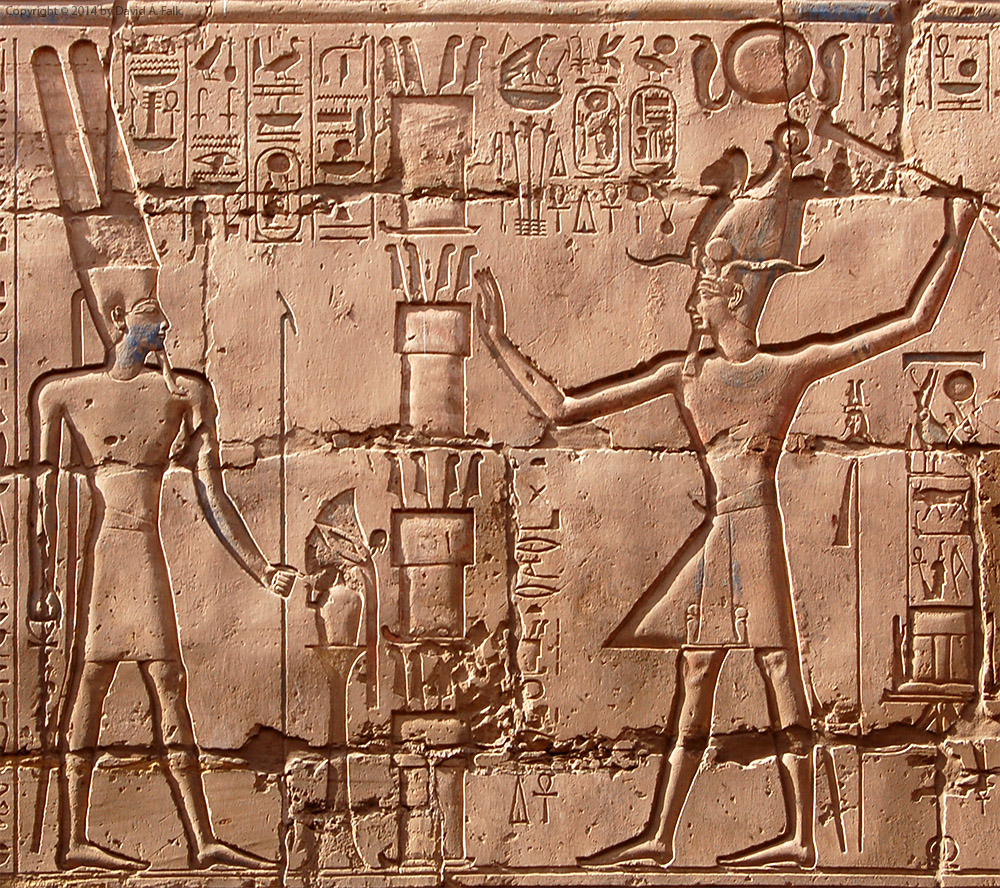Month: August 2018
The Best Ancient Egyptian Dictionaries
As an Egyptologist who has taught at a university, teaching the ancient Egyptian language is one of my duties… and great pleasures. And sooner or later, my students will need one or more dictionaries in order to continue studying Egyptian at a more advanced level.
Not All Dictionaries are Created Equal
One my specializations as an Egyptologist is lexicography. Lexicography is the study of the meaning of words. It is a field of study that has been much neglected over the past century but is imperative to our understanding of the Egyptian language.
As one grasps the issues involved in lexicography, one soon discovers that not all dictionaries are created equally. You will look at the definition in a dictionary and say to yourself, “Well, it sort of means that but not really.” Or you’ll even find that some definitions were originally placeholders that are accepted as part of the academic tradition.
For example, tἰšpss is frequently translated as “cinnamon” based upon how Breasted translated the word in AD 1906. He reasoned that the “merely hypothetical” translation “cinnamon” would eventually be corrected (Schoff 1920, 263). Within a couple generations, the definition entered into the academic tradition and became an accepted translation (Lesko, 2:201; Wilson 1124). But the problem remained–cinnamon trees do not grow in Africa.
And some dictionaries are so woefully flawed or out of date as to be absolutely useless, e.g., E. A. Wallis Budge, An Egyptian Hieroglyphic Dictionary (1920).
Best Dictionaries for Learning Egyptian
More often, students will resort to resources including dictionaries that they find online, e.g., Mark Vygus’ Middle Egyptian Dictionary (2002-2018). These “efforts” are not really dictionaries but word lists that have been extracted from someone else’s work/database.
For example, Vygus’ dictionary was extracted from Luca Brigatti’s Hieroword software. Paul Dickson’s Dictionary of Middle Egyptian (2006) in turn depends largely upon Vygus’ work. Neither Dickson, Vygus, nor Brigatti have a publication record in Egyptological journals. And as far as I can tell, they have no credentials in the field so their unvetted, low quality word lists are best avoided. What terrifies me is that I’ve seen these word lists used in so-called scholarly works (e.g. Petrovich, 2016).
So here is my list of the best dictionaries for learning ancient Egyptian annotated with my opinion as to each work’s merits and problems.
Raymond A. Faulkner, A Concise Dictionary of Middle Egyptian (1962).
This is the “go to” dictionary for students learning Middle Egyptian, and rightly so despite some errors and deficiencies. Faulkner was a first rate scholar and extremely proficient at lexicography, and he brings that experience into this book. It has some of the best definitions with citations that are found in any dictionary published to date.
The dictionary does have some problems that the student should be aware of. It is concise so it is shorter than other dictionaries, and the student may need to consult other works for less common vocabulary. Also, it is published in Faulkner’s handwriting, which can be difficult for the beginning student to read. The dictionary lacks street credibility in the academic community as a reference work, unfairly so in my honest opinion.
Overall, the work is inexpensive, reasonably accurate, and written in English. Few dictionaries on this list have all three. It is the single best dictionary for overall quality.
Adolf Erman and Hermann Grapow, Wörterbuch der aegyptischen Sprache (1926-1963)
The Wörterbuch, as it is known by, is the big standard reference dictionary of Egyptology. It comes in twelve volumes and is highly respected as the dictionary in the Egyptological community. The advantage of it is that it is exhaustive.
The disadvantages of it are plentiful. It is written in German, which is an impediment for most native English speakers. The definitions are not as well-considered as they should be–an embarrassing fact that Gardiner (1948) drew attention to. And for a work that is so highly regarded, it is poorly cited. An attempt was made to add citations with a supplement called Die Belegstellen, but that effort was unfortunately cut short.
No work of Egyptology would be consider seriously without consulting the Wörterbuch. In my opinion this dictionary is very long in the tooth and should be used as a starting point pending further lexicographical work. I would no longer consider the Wörterbuch the final authority for a definition.
Rainer Hannig, Großes Handwörterbuch Ägyptisch–Deutsch (2800-950 v. Chr.) (2009)
This is Hannig’s attempt to modernize and create an abridged version of the Wörterbuch. Lofty goals to say the least. The advantage of this work is that it is only one volume, and parts of it are an improvement over the Wörterbuch.
But there are some disadvantages. Like the Wörterbuch it is written in German. And many entries are little improved over the Wörterbuch. When the work was first published, the work was criticized for its lack of citations.
Hannig responded to these criticisms by writing the Ägyptisches Wörterbuch (2003-2006), which was intended to be comprehensive. Unfortunately, his citations are repetitive and include a lot of redundant entries referencing too many translations of the same source texts. What his work really needed was greater diversity of original source materials.
Overall, Hannig’s dictionary is expensive but compact. The quality of the work is an incremental improvement over the Wörterbuch.
Leonard H. Lesko, ed. A Dictionary of Late Egyptian, 2nd Ed. (2002)
Sometimes the best dictionary is the only one. This dictionary is really a word list that was compiled by Lesko’s graduate students. The 2nd edition does have more citations than the first, but it still lacks the scholarly reflection that you would find in Faulkner.
Nevertheless, many definitions were based upon translations done by expert Egyptologists. As such the work is not as inaccurate as one might fear from a compiled work. This dictionary, however, could still be improved upon with more proper word studies.
However, if you are studying Late Egyptian, you must have this dictionary. No other will suffice.
Penelope Wilson, A Ptolemaic Lexicon: A Lexicographical Study of Texts in the Temple of Edfu (1997)
This is the definitive lexicon on Ptolemaic period Egyptian. The scholarship is excellent and thorough. The work is written in English but is only for advanced students. The only problem is that it is next to impossible to get your hands on a copy as it was published as a fascicle of the series Orientalia Lovaniensia Analecta and not currently in print.
Walter E. Crum, A Coptic Dictionary compiled with the help of many scholars (1939)
There are two excellent dictionaries that deal with Coptic, the last phase of the Egyptian language. Fortunately, both are written in English, reasonably priced, and available as reprints. The dictionary by Crum is the standard dictionary for Coptic. Crum’s dictionary is an overall sound piece of scholarship.
Jaroslav Černý, Coptic Etymological Dictionary (1976)
Černý fills in an important gap by tying the Coptic words found in Crum to related words and phrases found in Greek and older forms of Egyptian. The scholarship is terrific and this work is essential for those doing lexicography that includes Coptic.
Sukkot, Camping West of Pithom
The Torah states that Sukkot was the next stop for Israelites after leaving Egypt (Exod 13:20; Num 33:6-7). Some scholars point to the similarity between the modern Arabic name Tell el-Maskhuta and the biblical name. The only problem is that Tell el-Maskhuta is east of Tell el-Retabah (Pithom).
From the exodus itinerary, it is clear that the biblical author pictured Sukkot as west of Pithom. The name should therefore not be understood as the name of a city. But like Goshen, the name was probably a regional designation, describing the area between Piramesses and Pithom.
This suggestion is consistent with the use of Tjeku in Papyrus Anastasis VI (54-56): “We have finished letting the Shasu tribes of Edom pass the Fortress of the House of Merneptah, l.p.h., which is in Tjeku, to the pools of Pithom of Merneptah, which are in the Tjeku, in order to sustain them and sustain their flocks by the pleasure of Pharaoh, l.p.h.”
According to this papyrus, the Shasu traveled from the Fortress of Merneptah to Pithom, both of which were in Tjeku. This would likely place the Israelite encampment of Sukkot near the entrance to the wadi, possibly near the modern town of Abou Hammad.
The Hebrew name Sukkot is related to the term that means “booths.” As such, Sukkot may have only been the location of a temporary camp site. In other words, a way station with limited water and resources.
The Phenomenology of Egyptian Carved Reliefs
The Egyptians believed that writing and drawings instantiated magical power and presence. And that is because Egyptian metaphysics tied magic to writing, both of which were attributed to the god Thoth.
Let us say that I were to write a mild curse on a piece of paper “may there be one less step than my nemesis expects.” The Western mind would think nothing of this other than to maybe crack a wry smirk because in the West something written on a piece of paper has no more power than a bitter tweet or a nasty greeting card. Separation exists between the agency of the writer, the object of writing, and the mechanics of the world.
With the ancient Egyptian mind, that separation does not exist. Divinity had the ability to unite with its images (both statuary and temple reliefs) embodying the god’s divine power. This resulted in a phenomenological view of writing. Writing a mild curse on paper created an object of writing that affected the mechanics of the world. The contents of the written form change the fabric of reality. So, my mild curse would cause my nemesis to trip at every set of steps he climbs.
In the same manner, the reliefs that the Egyptians carved on their temple walls created perpetual reenactments of a ritual in writing for the benefit of their gods. The carved reliefs recreated rituals to praise the gods day and night.
The preceding blog was an abridged excerpt out of the book that I am currently writing.
Pi-Ramesses, City on an Island
The Bible mentions the cities of Pithom and Ramesses as the places where the Israelites made “storage cites” (Exod 1:11). Exod 12:37 and Num 33:3-5 point to Pi-Ramesses as the starting place of the exodus. So what do we know about the early history of the island city of Pi-Ramesses?
The only city of the ancient world with name “Ramesses” was Pi-Ramesses, the “house of Ramesses.” Labib Habachi identified Pi-Ramesses at the archaeological site of Qantir. Qantir is located 2 km east of Avaris, the former Hyksos capital.
Seti I (ca. 1303-1288 BC) founded Pi-Ramesses as a royal residence. Ramesses II (ca. 1288-1222 BC) expanded the city to become capital of Egypt. Papyrus Anastasi III (1:12) dating to Merneptah’s 3rd year spells Pi-Ramesses with the birth name of Ramesses II, “Ramesses Meriamun.”
The Egyptian kings built Pi-Ramesses to keep an eye on the large Semitic population at Avaris. The city also located in the region where the Ramessides had their power base. The two cities existed together until Avaris was abandoned during Dynasty 19.
Ground-penetrating radar and Caesium-Magnetometry surveys done in 1996, 2003, and 2008 revealed no earlier remains beneath the Dynasty 19 city. Moreover, the city of Pi-Ramesses was an island surrounded by water on all sides.
These facts show us two things. (1) The Israelites lived near but not in Pi-Ramesses itself. (2) The Exodus could not have occurred earlier than the reign of Ramesses II. Thus, the Israelites probably gathered for the exodus at a staging area between Avaris and Pi-Ramesses. Avaris afterwards ceased being a viable city when it was abandoned by the Israelites.
New Research in Ancient History
I am dedicating this new blog to telling the story of the Bible in light of its Egyptian context. Over the last 150 years, ancient Near Eastern studies have shown that nothing from the Old Testament was cut from whole cloth. The Pentateuch emerged from a culture stretching back thousands of years. Yet, few authors engage the wealth of Egyptian material culture in relation to the Bible.
The Bible having an Egyptian context might sound strange, but it should not be. If we are to believe the biblical text, the Israelites left Egypt after living there for hundreds of years. While living in the Nile delta, they would have adopted customs and ways of thinking distinct to Egypt.
Yet, few serious researchers explore this material. In the early 20th century, Egyptology as a discipline separated itself from biblical research. And the two fields more or less grew independently. Today, with the rigor required to be an Egyptologist, few scholars are trained to engage both Egyptology and the Bible.
Thus, the time is now right to publish the research that I have gathered. As I write books and articles, my research from peer reviewed journals is now finding its way into popular press. So as I engage Egypt and the Bible, I will be making new discoveries and publishing new works. And as I publish, I hope this blog will expose this fascinating world to a wider audience.
